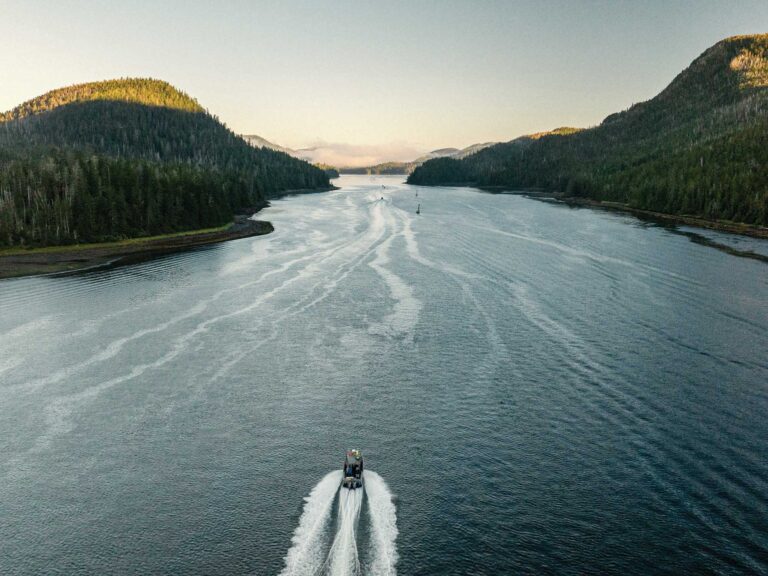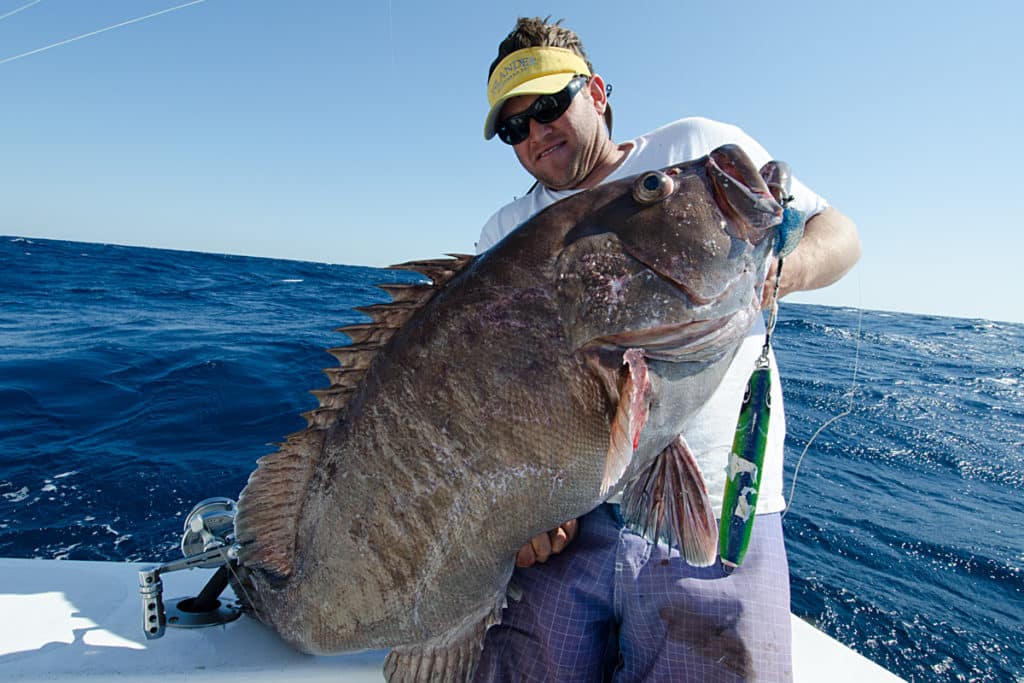
It’s no secret that record-class bottomfish lurk in the depths of the mid-Atlantic. Anglers fishing in 1,000 feet of water with electric reels have caught fish that would shatter world records for golden and blueline tilefish, snowy grouper and more. Fishing so deep with traditional setups and 4-pound sinkers is impractical, but vertical jigs and lightweight jigging gear let you pluck trophies from extreme depths.
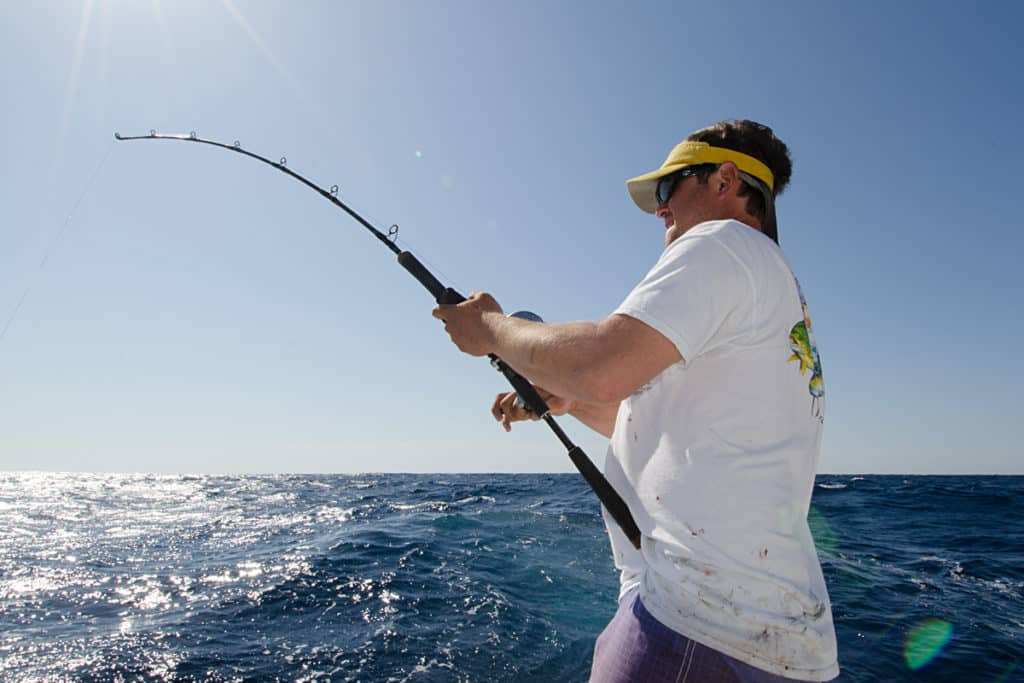
I first experienced vertical jigging when I was a kid fishing with my dad on Capt. John Nedelka’s Karen Sue off Indian River Inlet, Delaware. While other anglers fishing with bait caught a fair number of sea bass on bottom rigs, Dad and I smoked everyone by bouncing 3-ounce diamond jigs around the wreck. Since then, I’ve been a fan of lighter jigs and no bait to score oversize bottomfish. The standard three-hook bait rigs with heavy sinkers can catch fish three at a time, but a jig tends to catch bigger ones. And without bait and only one hook, I can drop my lure, catch a fish, unhook it, and get back in the game easier and faster.
When the vertical-jig revolution hit, I was anxious to apply the technique along the deep edge of the Continental Shelf to try for large tilefish, grouper, sea bass and slimehead — also known as roughies — using modern jigs, braided line and high-speed tackle. From New England to the Carolinas, those deep fishing grounds stretch from 50 fathoms to over 100, with the biggest bottom dwellers usually in the deepest water.
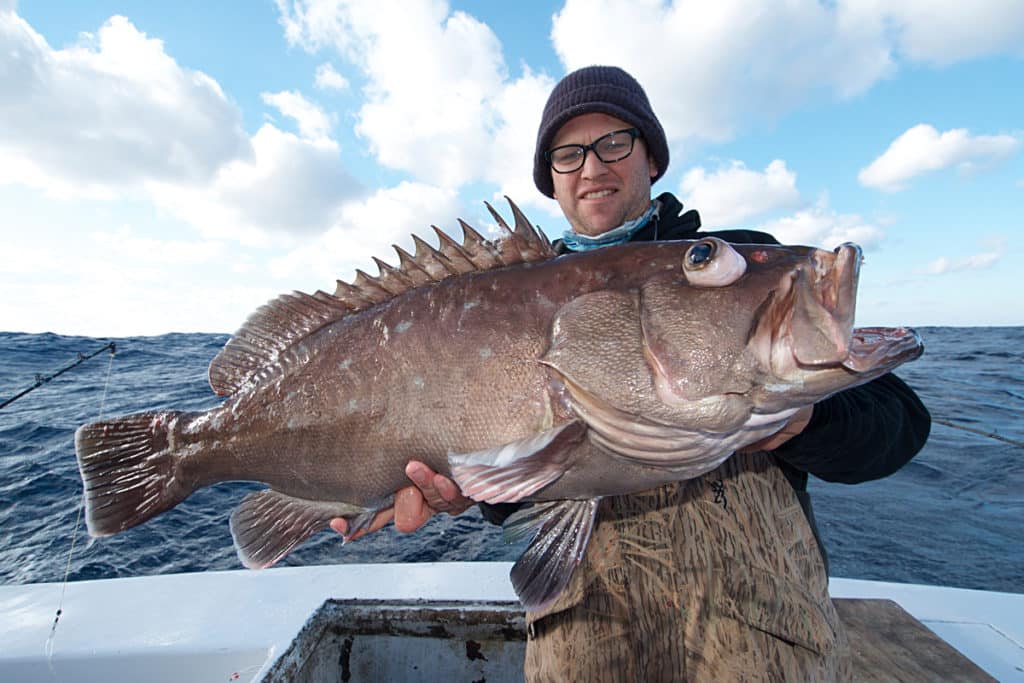
I used medium-heavy jigging tackle rigged with 16- to 24-ounce jigs on 50-pound braid with 8 feet of 80-pound fluorocarbon leader to work on hefty blueline tiles and sea bass in 200 to 300 feet of water around Norfolk Canyon off Virginia Beach. But when we tried for deep grouper and goldens with those jigs, we were clearly under-gunned.
Still, I couldn’t help but wonder if the system would work on bigger fish in even deeper water. I heard Capt. Phil Leo was having good results on golden tiles with vertical jigs off New Jersey. So when Andy Piland, a charter captain friend, sent me photos of big -grouper and goldens caught closer to home, off North -Carolina’s Outer Banks, I had to investigate.
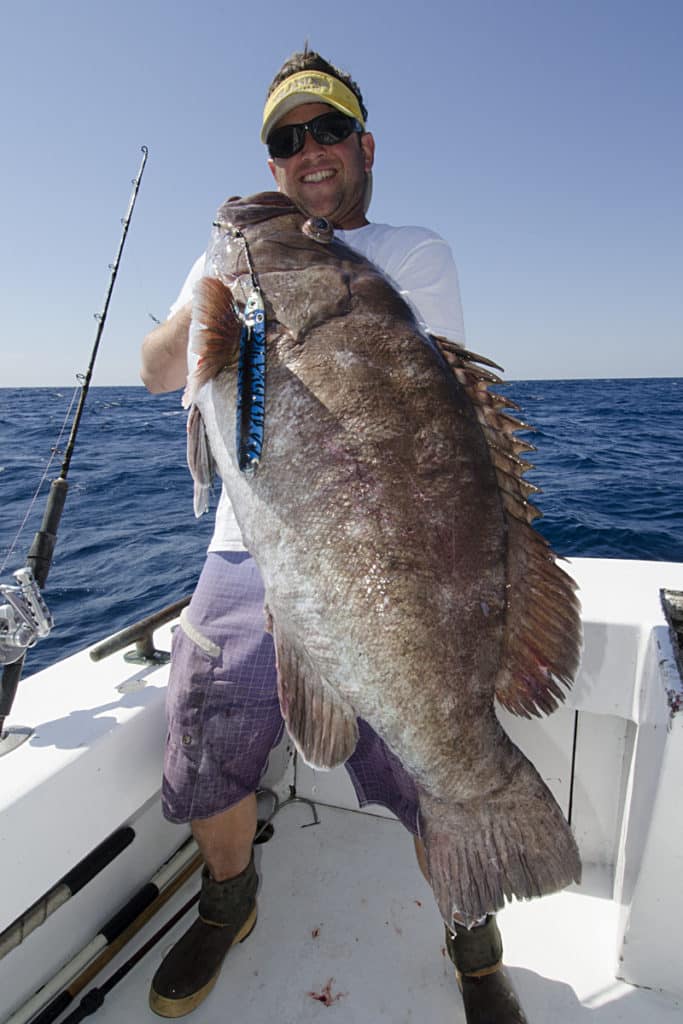
I joined Piland last summer to try my hand at deep-jigging off Hatteras. We were blessed with an unusually calm, clear day for our trek to the Graveyard of the Atlantic. After a 20-mile run from the inlet, he came off the throttle and called my attention to the fish finder. It showed we were in 100 fathoms and a there was a sharp rise in the bottom. “That’s a rock,” Piland said. “And those are grouper,” he added, zooming in to expose telltale arches hovering over the rock.
Tim Hagerich, the mate, rigged a heavy jigging rod with a 750-gram vertical jig tipped with a strip of false albacore belly. He explained that if the fish gets the meat and misses the hook, it will come back to attack the jig again. It takes 15 minutes for the jig to hit bottom and twice as long to bring it to the surface. Once the lure touched down, I put the reel in gear and, following Hagerich’s instructions, I jerked the rod tip violently to bounce the jig off the bottom 600 feet below.
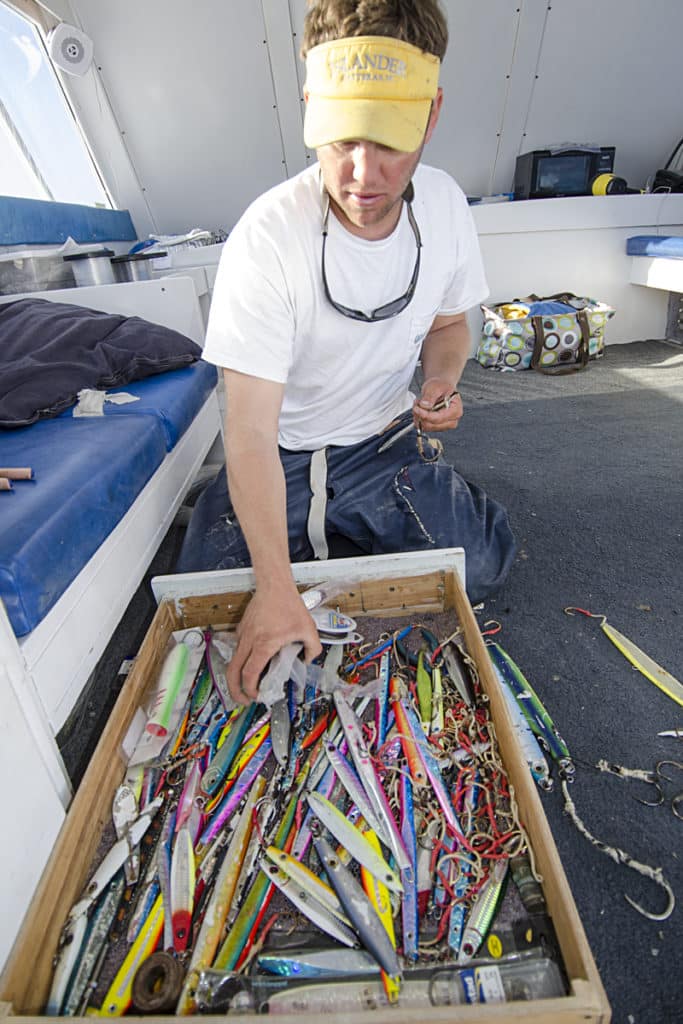
As the boat drifted along at 2 knots, slow for the Gulf Stream current, I worked the jig and waited for a big bite. When I lost touch with the bottom, Hagerich showed me how to find it again. “Pull out a few feet of line and let it float on the surface,” he said. “If it doesn’t go down immediately, you’re on the bottom.” I tried it and was in the zone again. After repeating the procedure a couple of times, I felt a nibble, not the big bite I was expecting. I started the long turn back to the surface, and after half an hour of cranking, I was rewarded with a bright red rosefish about the size of a croaker.
On the opposite side of the boat, Hagerich was having better luck. One of his wild rod jerks was answered with a solid yank, and he promptly reacted by cranking as fast as he could, taking up line until the rod bent into a deep arc. The fish bucked and pulled against the drag during a 30-minute back-and-forth battle. But Hagerich worked the handle on the high-speed reel and methodically pumped the short rod until a large grouper surfaced 10 yards behind the boat.
As I heard the rumble of the engines, I took another look at the fish-finder screen and tried to imagine how many of the splotches were world-record grouper before Piland motored off to our next spot.
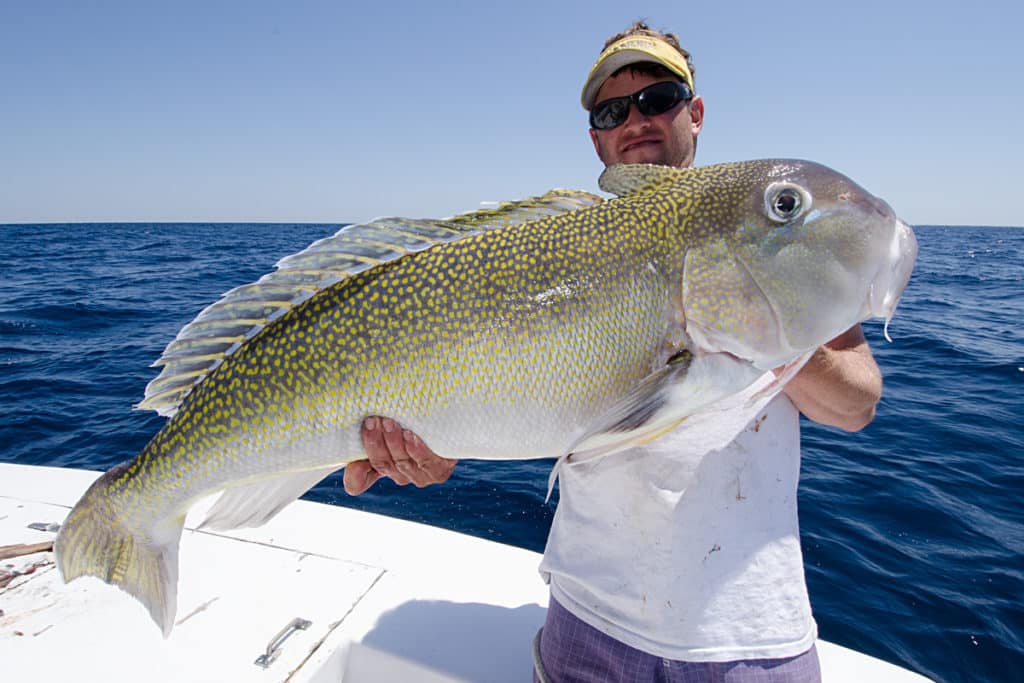
A few miles later, we pulled up on a flat bottom area that Piland described as muddy. Tilefish love soft bottom, and a thin red line on the fish finder indicated that’s exactly what lay below us. We sent down the same jig-and-strip combinations, and it didn’t take long to get a response. Again, I got a nibble and Hagerich got the big bite. I quickly pulled another small rosefish over the side, and a few minutes later, the mate bested a nice 30-pound golden tilefish.
The 4-to-1 retrieve ratio on my reel offered a good balance between speed and power, and rigged with 80-pound-test braid, the narrow 750-gram vertical jigs successfully reached bottom. But the learning curve was as steep as the drop to the bottom, some 90 stories below the boat. We made two more drops, and I finally managed a decent golden. Hagerich, meanwhile, pulled in another trophy. When I asked for his secret, he laughed and said, “I’m lucky,” before admitting that keeping the jig on the bottom is the key.
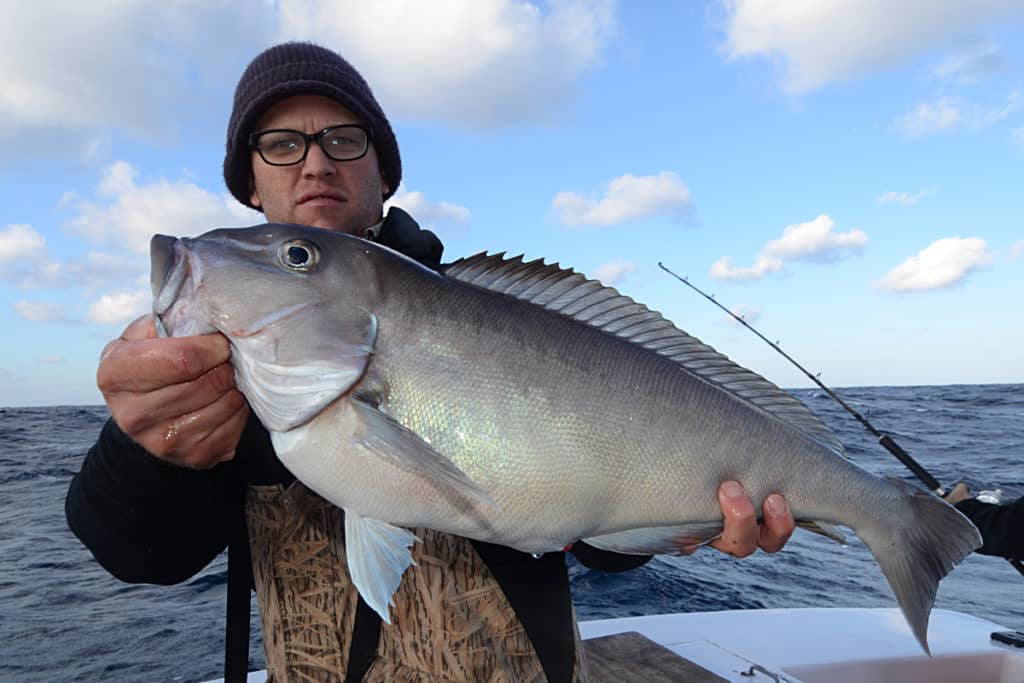
Unlike the Goldens, blueline tilefish favor irregular bottom with a mixture of sand, mud and shell.
New Regulations: On March 30, 2015, NOAA Fisheries published a final rule that reduced the blueline tilefish annual catch limit from 111,893 pounds whole weight to 17,791 pounds. After landing reports indicated the revised annual catch limit had been exceeded, NOAA Fisheries announced recreational harvest of blueline tilefish in South Atlantic waters would close June 10, 2015. The Feds also specified that the recreational season is from May through August each year, unless closed through an in-season closure. Therefore, in 2016, recreational fishing for blueline tilefish will be closed from January 1 through April 30 and again September 1 through December 31. When the recreational season opens (May through August), a new bag limit of one fish per vessel per day will be in effect.
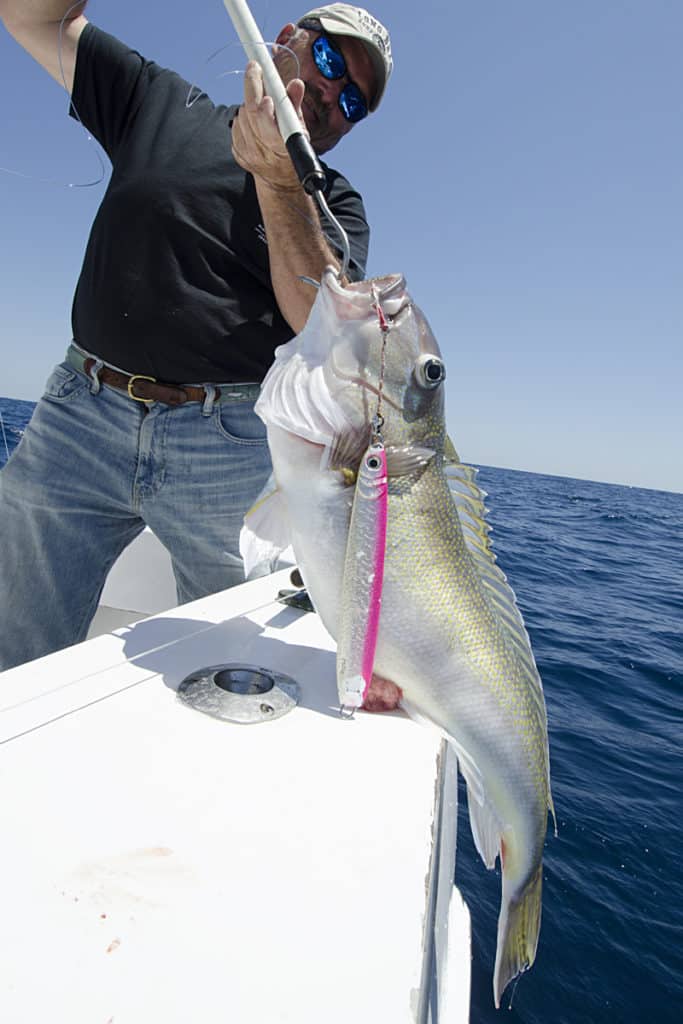
Grouper and golden tiles live on the edge of the Continental Shelf from 30 to 150 fathoms. For grouper, Piland looks around rocks and ledges with a 1 kW transducer and the gain on his fish finder cranked all the way up. “I set the display to split screen with one side on bottom lock,” he explained. On the wide-view side, he watches for rocks and ledges. On the zoomed-in side, he looks for bait and grouper near the bottom.
Golden tiles, however, prefer a wide expanse of muddy bottom because they like to burrow in the soft sediment. Piland searches for them on mud flats or gentle slopes along the Continental Shelf. “I look for the bottom to return as a thin line on the fish finder,” he says. The veteran captain later mentioned that “the fish don’t live in big places,” adding that sometimes he finds the tilefish in hot spots as small as 100 square yards.
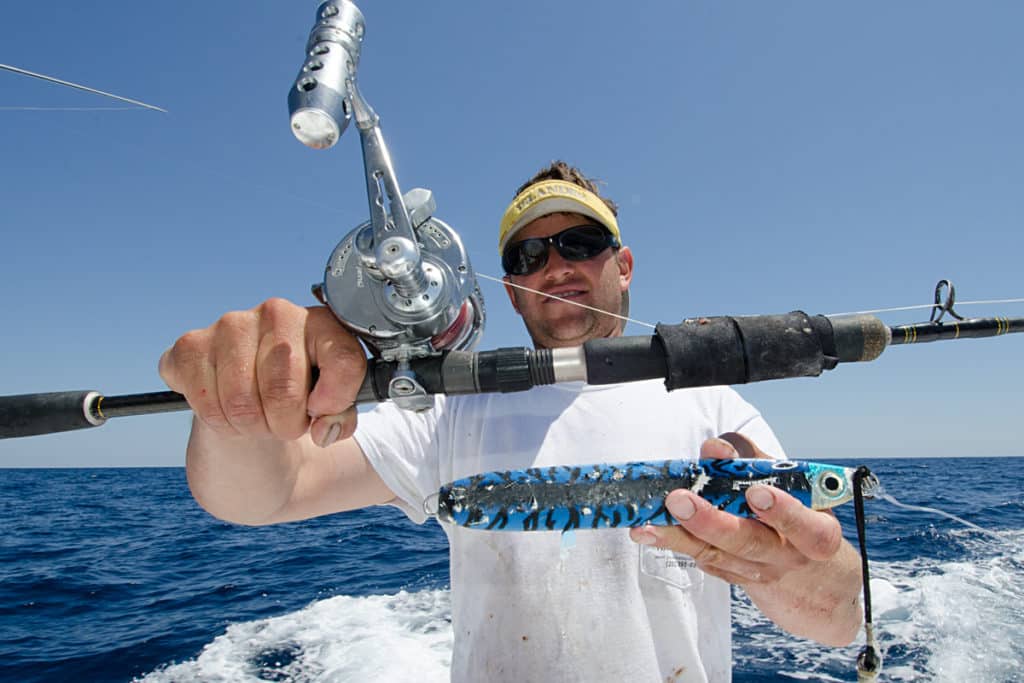
Jigging rods — like this Black Hole — shorter than 6 feet provide better leverage during vertical tugs-of-war with big, powerful bottomfish.
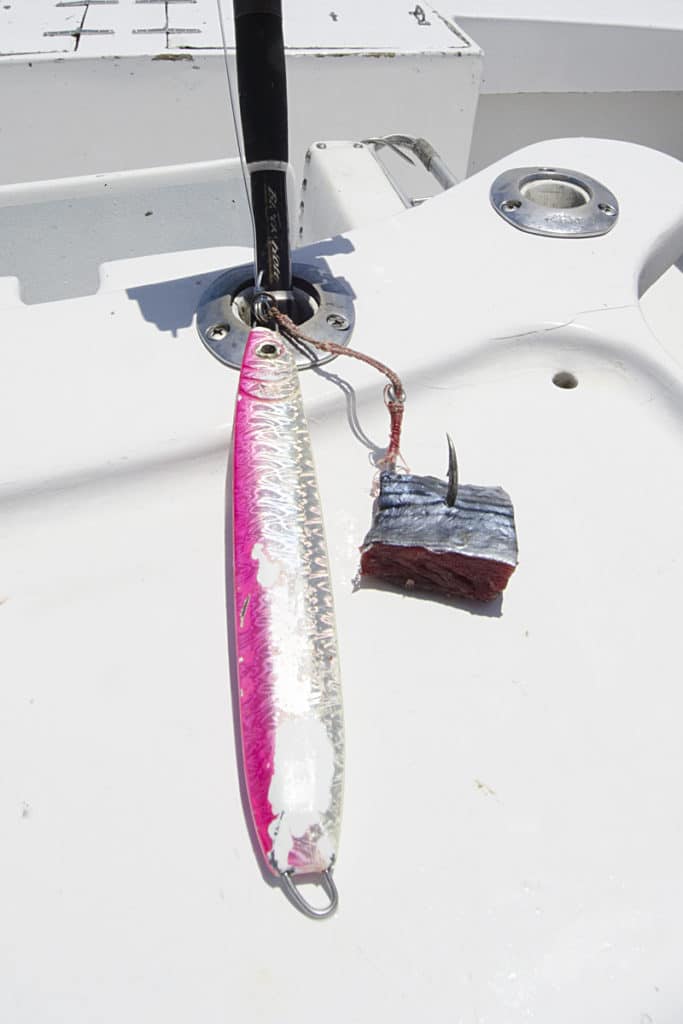
Jigs in varying weights target fish at different depths, and adding bait to the jig makes fish come back for seconds, so the angler has another chance, if he misses the hook-set on the initial strike.
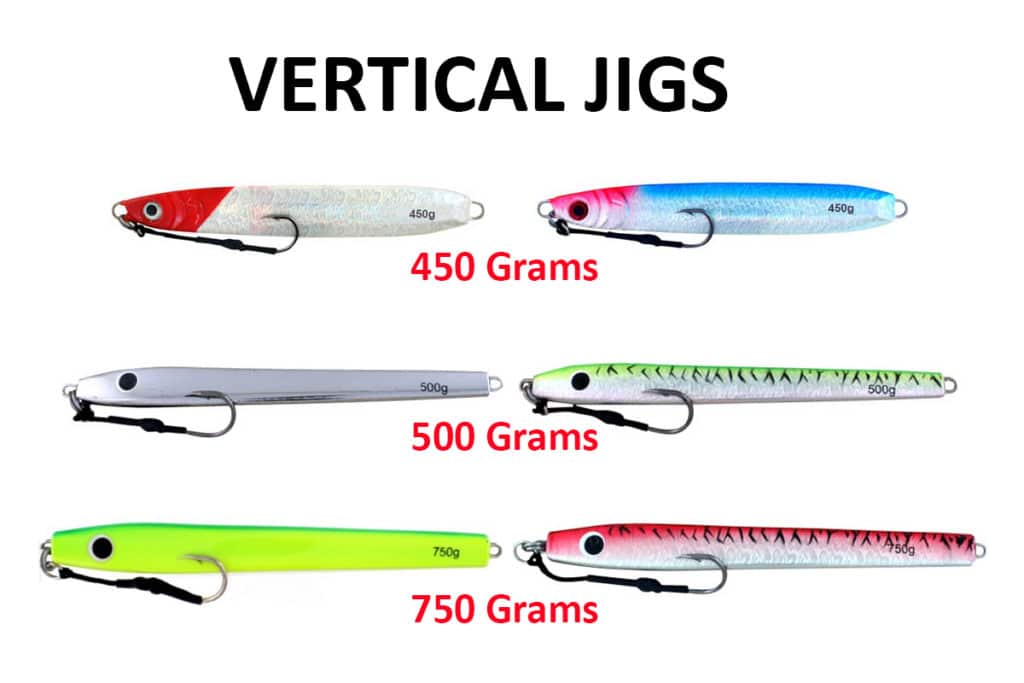
Almost Alive, Ocean Tackle International, Williamson Lures and others offer vertical jigs in a wide range of weights, shapes and color schemes. Extreme depths require jigs from 450 to 750 grams. Sunlight doesn’t reach the bottom hundreds of feet below the surface, so lure color is inconsequential compared with the proper presentation, strong hardware and stout hooks, preferably 13/O circle hooks.
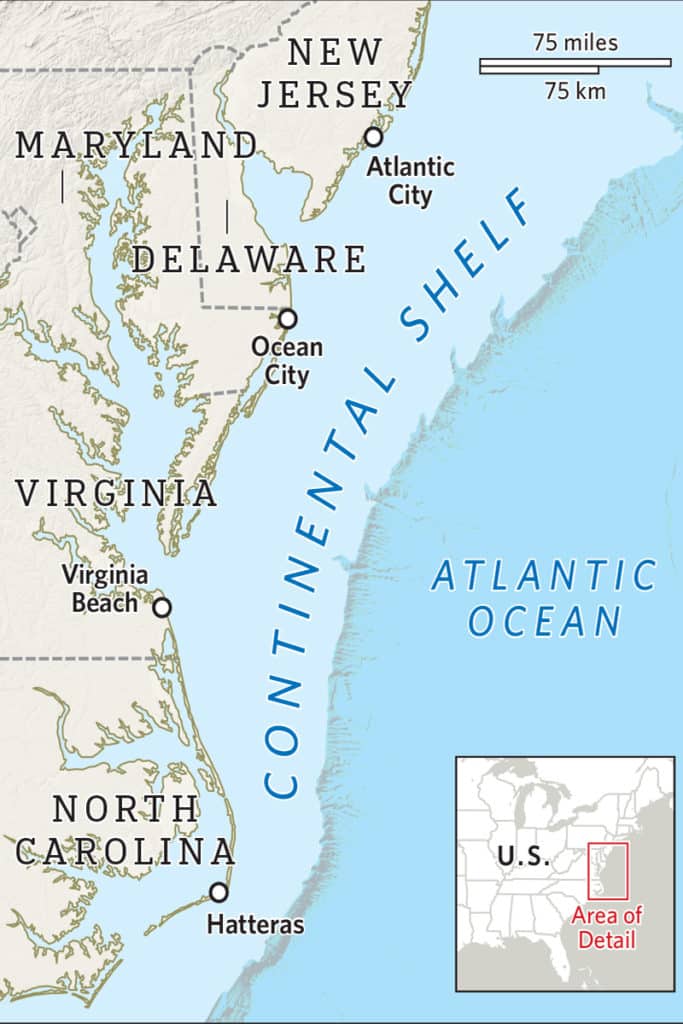
The edge of the Continental Shelf lies closest to shore along the Mid-Atlantic coast, especially off North Carolina’s Outer Banks, where a 20- to 30-mile run puts you over the deep slopes and canyons where record-size bottomfish live.





